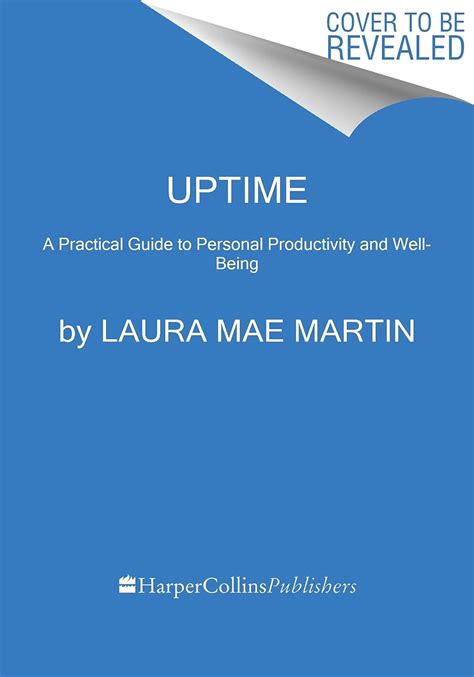Keeping your home organized with kids can be a challenging task, but it’s essential for maintaining a peaceful and functional living environment. With the right strategies, you can create a space that encourages order and responsibility while accommodating the needs of your little ones. This guide offers practical tips to help you achieve a tidy home, starting with creating designated spaces for toys and supplies. Implementing a daily cleanup routine, using kid-friendly storage solutions, and labeling everything for easy identification are just a few steps that can make a big difference. Empower your children to take responsibility and establish consistent organizational habits to ensure your home remains clutter-free.
shzow.com will take you through an extensive exploration of this topic.
1. Create Designated Spaces for Toys and Supplies
To maintain a tidy home with children, establishing designated areas for toys and supplies is key. By assigning specific spots for various types of playthings and materials, clutter is minimized, and children can easily locate and return their belongings. Begin by evaluating available space in your home, such as playrooms, bedrooms, or shared family zones. Utilize shelving units, bins, or baskets to categorize items like books, puzzles, arts and crafts supplies, and stuffed animals.
To encourage children’s participation in cleanup routines, opt for storage solutions that are both accessible and safe. Color-coded bins or labeled containers can help young children quickly determine the proper location for their belongings. For smaller homes, vertical storage solutions such as wall-mounted shelves or hanging organizers provide a space-saving alternative by maximizing vertical space without encroaching on valuable floor area.
To create a harmonious balance between organization and home decor, consider incorporating storage furniture like ottomans or benches with built-in compartments. Engage your children in setting up their own spaces, fostering a sense of ownership and responsibility for maintaining order. Establishing these designated areas not only promotes a more organized home but also instills valuable life skills of responsibility and independence in your children. With clearly defined spaces for toys and supplies, managing them becomes a manageable task for everyone in the family.

2. Implement a Daily Cleanup Routine
A daily cleanup routine is essential for keeping a home organized when children are present. By spending a few minutes each day tidying up, you can avoid clutter buildup and instill the value of a tidy environment in your children. Designate a specific time for cleanup, such as before dinner or bedtime, and make it a consistent part of your family’s daily schedule.
Make cleanup time a fun and rewarding experience! Play music, hold a timed “cleanup race,” or establish a reward system with points or stickers for completing tasks. Engage your children by assigning age-appropriate responsibilities like putting away toys, organizing books, or tidying their rooms.
By leading by example and participating in the cleanup alongside your children, you reinforce the message that tidiness is a shared responsibility. This daily practice, repeated over time, cultivates good habits and a sense of responsibility, leading to a more organized and harmonious home.

3. Use Storage Solutions that Kids Can Easily Access
Making storage solutions easily accessible to children is crucial for maintaining a tidy home and fostering their responsibility for belongings. When storage is within their reach, children are more inclined to put things away independently, preserving the organized environment you’ve diligently created.
When selecting storage options for children, prioritize safety and ease of use. Low shelves, sturdy bins, and manageable baskets are excellent choices. Open storage solutions, such as shelves and baskets, allow children to easily see what’s inside without the need to open lids or drawers. This visibility promotes quick item location and encourages them to return items to their designated spots.
To make tidying up simpler for everyone, consider using clear bins or containers. Add pictures or labels to these containers, which can help even non-readers understand where things belong. Involving your children in labeling and organizing can also empower them to take ownership of their space and the cleanup process.
To optimize space in shared areas, utilize furniture with integrated storage, such as benches or tables with compartments. For younger children, position frequently used items at eye level, while storing less frequently used items in higher spaces.
Accessible storage solutions not only create a more organized home environment, but also empower children to develop independence and responsibility in managing their own belongings.

4. Label Everything for Easy Identification
Labeling items for easy identification is a straightforward but effective way to keep a home with children organized. Labels act as clear visual cues, enabling both children and adults to quickly locate and return items to their proper places. This simple practice minimizes clutter and reduces confusion.
To begin, clearly label your storage bins, shelves, and drawers with easy-to-read labels that combine text and images. Pictures are particularly beneficial for younger children who are still developing their reading skills, making it easier for them to understand where things belong. You can make these labels using printed photographs, stickers, or hand-drawn illustrations depicting toys, books, or other items.
By involving your children in the labeling process, you can empower them to take ownership of their belongings. Encourage them to help choose images or words for labeling their items, which will not only familiarize them with the organization system but also instill a sense of pride in keeping their space tidy.
To keep shared spaces organized, use color-coded labels to distinguish each child’s belongings. This simple system helps children easily find their own items. Remember to update the labels as toys or supplies change, ensuring that all information is accurate and useful.
Implementing a clear labeling system fosters an organized environment that encourages independence and responsibility. This makes it easier for everyone to maintain order and efficiency.
5. Encourage Kids to Take Responsibility for Their Belongings
Teaching children to take responsibility for their belongings is crucial in developing their sense of organization and self-reliance. By fostering these habits at a young age, children learn to appreciate their possessions and actively participate in keeping their home neat and organized.
Begin by establishing clear expectations for tidiness, emphasizing the importance of caring for their belongings. Engage your children in organizing their own spaces, giving them the opportunity to decide where and how to store their items. This participation cultivates a sense of ownership and pride in maintaining a neat environment.
Encourage responsibility by using positive reinforcement, such as praising their efforts or establishing a reward system for consistent tidiness. Make cleanup a routine part of their day by setting specific times for it, like before bed or after playtime.
Set a positive example by keeping your own belongings organized and showing the value of tidiness in everyday life. Provide guidance and support when they need it, but let your children take responsibility for managing their own things.
Provide age-appropriate tasks that align with their abilities, gradually increasing their responsibilities as they grow. By teaching your children to take responsibility for their belongings, you help them develop essential life skills that will benefit them well into adulthood.
6. Establish Consistent Organizational Rules and Schedules
Establishing consistent organizational rules and schedules is crucial for maintaining an orderly home environment with kids. Consistency helps children understand expectations and form lasting habits, making organization a natural part of their daily lives.
Start by setting clear, simple rules for tidiness that everyone in the household can follow. These might include putting toys away after playtime, organizing clothes in the closet, or keeping study areas neat. Make sure the rules are age-appropriate and easy for your children to remember and follow.
In addition to rules, create a regular schedule that incorporates time for tidying up. Consistency is key, so choose specific times, like before meals or at the end of the day, for cleanup activities. This routine helps children anticipate and prepare for their organizational responsibilities.
Communicate these rules and schedules clearly, and involve your children in developing them to encourage buy-in and cooperation. By establishing consistent organizational practices, you create a structured environment that supports your children’s growth and fosters a sense of responsibility and orderliness.
7. Regularly Declutter and Donate Unused Items
Keeping your home organized and manageable, especially with kids, is easier when you regularly declutter and donate unused items. Over time, toys, clothes, and other belongings can accumulate, leading to clutter and making it a challenge to maintain order.
Regularly set aside time to review your children’s belongings, identifying items they no longer use or need. Involve your children in this process to instill the value of decluttering and the importance of giving back. Encourage them to make decisions about what to keep, donate, or discard, nurturing their sense of responsibility and generosity.
Designate a specific area or container for donations. This could be a donation station, a designated box, or even a shelf. Make sure to regularly check and empty this area to prevent it from becoming cluttered itself. To ensure a consistent flow of items out of your home, establish a regular decluttering routine. This might involve seasonal decluttering, or it could be tied to specific events like birthdays or holidays.
Regular decluttering and donations help prevent clutter from accumulating, making it easier to maintain an organized living space. This practice also teaches your children valuable lessons in organization, generosity, and the importance of giving back to the community.
Maintaining an organized home with kids requires a combination of practical strategies and consistent routines. By creating designated spaces for toys, implementing daily cleanup routines, using accessible storage solutions, and labeling everything, you set the stage for a tidy and efficient environment. Encouraging your children to take responsibility and establishing consistent rules further supports a well-organized home. Regularly decluttering and donating unused items helps keep clutter at bay. With these tips, you can foster a sense of order and responsibility in your family, making home management both manageable and rewarding.
shzow.com
